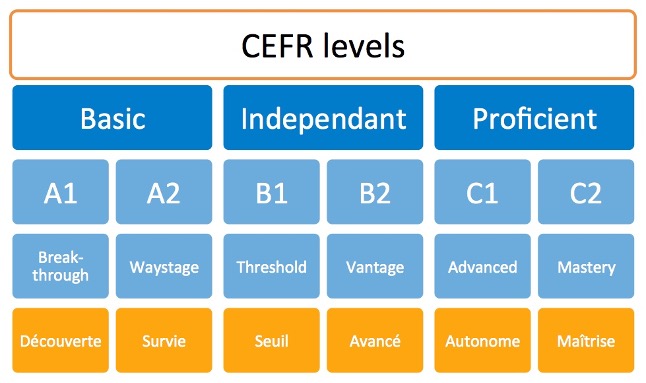You are an English/French listener… now say you are an English/French speaker ! The only mistake is… not speaking ! I will guide you in your practise and find suitable and interesting subjects to discuss in a nice and relaxing atmosphere.
You will develop a better understanding of the language and know when to use this word or tense instead of that one and why. Say goodbye to questions like “What is the word for… ?” and “How do you say… ?” and prefer “When do I use this… ?” or “Why should I use this…?”
You will know where you stand and where you need to improve.
I also refer a lot to what native speakers expect from foreigners and let you know about what they would like to hear so that you sound more natural. I will help you to understand the common mistakes foreigners make when they speak. The essential part here is that after everything, you can choose your own words and be yourself when you speak!
The idea is to give you all the tools, tips and practice you need so that you can manage your own self-directed learning afterwards. I incorporate neurosciences into my approach, which enables you to learn in a more effective way. I also use psychosocial skills and multiple intelligence theory. Everyone is different, and we need to use all your potential as a human so that you can learn the best way – even the ways you wouldn’t suspect!
I refer to the competencies described in the Common European Framework of Reference for Languages such as spoken production and interacting. I teach A1 to C1 level. After a few lessons you will have an understanding of your level and know where to go next. Here is the general overview of this document used to assess any target language.

The more you speak the better I can guide your practise and the better I know what kind of subjects you are interested in.
I will help you to:
Teaching reading, speaking, listening and writing online is different from the face-to-face environment but that does not mean it is less efficient! Teaching speaking online requires from my side to be even more attentive while monitoring the language, giving feedback and encouraging participation.
Feedback can be delayed or on the spot and I can write on the chat box as you speak. As for the reading, most of the time, I will send you some material to read or listen to before the lesson. However if we do it during the lesson, we can share a screen on a platform.
I use Zoom, Skype and Google Meet, but if you are used to working with another platform, please feel free to let me know. Depending on the one chosen, we can use the drawing tools for annotation on a text for example. It is also possible to take a screenshot of the reading material and save it to a folder. We can also work on writing on a whiteboard while sharing screens.
I use international news relating to subjects you are interested in. Exploring international news in another language is a great way to leave behind your mother tongue and your way of thinking to see how people live and think elsewhere on the planet. It’s a way to travel and escape from your day-to-day life and to keep your mind open to others. Getting to know a culture encourages you to go and meet people in a more relaxed way, or to watch a documentary/film with a better understanding – all of which will improve your English/French.
Materials include videos, articles, art, clips from films, audio and books, as well as games, objects and toys for younger learners.
We can also use your own experiences as a conversation topic for classes; you talk about your experiences or something that interests you – such as work, sport or art. This is spoken production; without being conscious of it you work deeply on vocabulary in areas relevant to your life, thus improving your fluency. That word you could not find the first time – you explained it to me with many other words (periphrasis) and this not only gives you the opportunity to practice your active vocabulary but also to search through your passive vocabulary (words that you know but are not familiar enough with to use). In the next conversation, when the opportunity arises, you will be able to use the right word and all the others which helped you get to it.